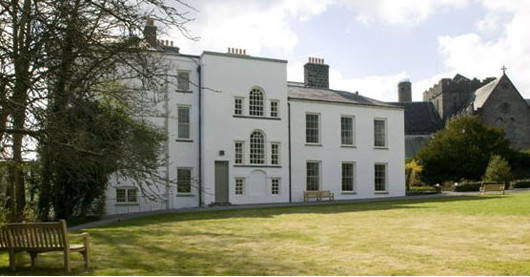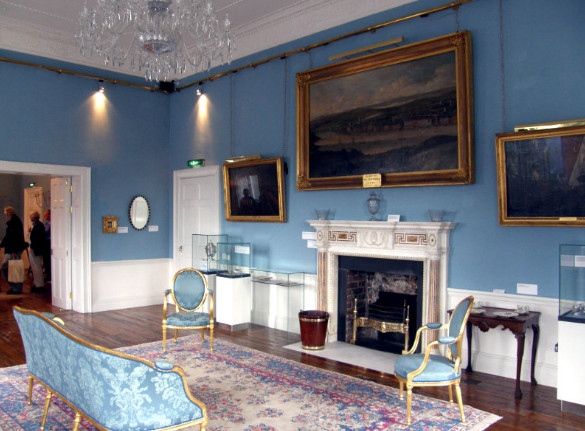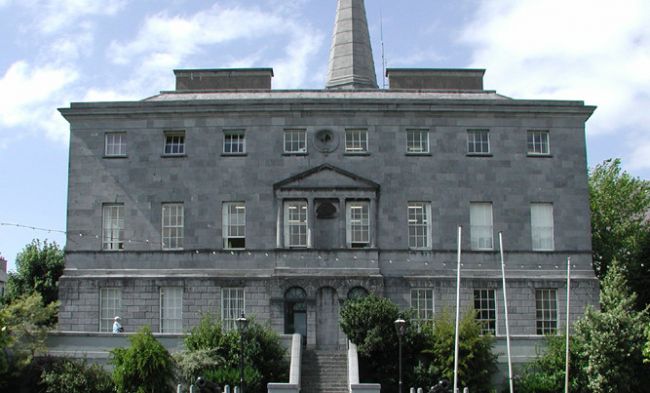| Irish Forums Message Discussion :: Church of Ireland evil rents tithes on the Irish natives. |
   | Irish Forums :: The Irish Message
Forums About Ireland and the Irish Community, For the Irish home and Abroad. Forums include- Irish Music, Irish History, The Irish Diaspora, Irish Culture, Irish Sports, Astrology, Mystic, Irish Ancestry, Genealogy, Irish Travel, Irish Reunited and Craic
|  
|
Church of Ireland evil rents tithes on the Irish natives.


|
|
|
| Irish
Author |
Church of Ireland evil rents tithes on the Irish natives. Sceala Irish Craic Forum Irish Message |
|
Berties brown envelope
Irish Forums Member
|
| Sceala Irish Craic Forum Discussion:
Church of Ireland evil rents tithes on the Irish natives.
|
|
|
The Anglicans,the church of England / Church of Ireland has a really evil history in Ireland. Those evil bastards they called Vicars and Bishops imposed tithes rents on the poorest and were willing to kill to get their tithes.
In the year of 1831 alone, the authorities recorded 242 homicides, 1,179 robberies, 401 burglaries, 568 burnings, 280 cases of cattle-maiming, 161 assaults, 203 riots and 723 attacks on property directly attributed to seizure order enforcements by the Church of Ireland tithes imposed on the Irish people.
While the Irish people starved and lived in poverty, millions dying and being forced to emigrate in a Westminster Crown designer famine.
Parasitical Anglicans Bishops lived in grand palaces like these.
The Bishop's Palace in St Canice's Court Kilkenny paid for by imposed tithes on the native Irish.

The exterior and interior of the Church of Ireland Bishops Palace in Waterford.


In Every county, in every major town in Ireland, Anglicans would live like petty kings at the expense of the Irish people.
Over the centuries, countless thousands of Irish were executed, imprisoned or sent to the Penal Colonies of the Crown. The Church of Ireland was a main benefactor of the evil.
While the Irish people starved and lived in extreme poverty, the Vicars of the Church of Ireland lived in big houses and were fattened off the backs of the Irish people.
These shameless Anglican church have rewritten history to suggest they are the real Irish church. And some of the most ignorant Irish actually believe the perverse lies.
FCUK off, the Church of Ireland are the church of England, imposed by Westminster on Ireland, that is their origins and real bloody history.
Church of Ireland evil rents tithes on the Irish natives.
Tithe War
The Tithe War (Irish: Cogadh na nDeach'na) was a campaign of nonviolent civil disobedience, punctuated by sporadic violent episodes, in Ireland between 1830 and 1836 in reaction to the enforcement of Church of Ireland tithes on subsistence farmers and others for the upkeep of the established state English Crown church ' the Church of Ireland.
Tithes were payable in cash or kind and payment was compulsory, irrespective of an individual's religious adherence.
The English Crown church of Ireland imposed these taxes and kept logs of any Irish who dared refuse.
Background to the English Crown church of Ireland tithes and tax collections
Tithe payment was an obligation on those working the land to pay ten per cent of the value of certain types of agricultural produce for the upkeep of the clergy and maintenance of the assets of the English Crown church of Ireland.
After the Reformation in Ireland of the 16th century, the assets of the majority religion the Roman Catholic church were allocated by King Henry VIII to his new established church.
Henry VIII created the English Crown church of Ireland.
The majority in Ireland who remained loyal to the old religion were then obliged to make tithe payments which were directed away from their own church to the reformed one, the English Crown church of Ireland. This increased the financial burden on subsistence farmers, many of whom were at the same time making voluntary contributions to the construction or purchase of new premises to provide Roman Catholic places of worship.
The new established English Crown church of Ireland was supported by only a small minority of the population, Ninety percent of whom continued to adhere to Roman Catholicism.
Emancipation for Roman Catholics was promised by Pitt during the campaign in favour of the Act of Union of 1801 which was approved by the Irish Parliament, thus abolishing itself and creating the United Kingdom of grate britain and Ireland. The English king, however typically lied and refused to keep Pitt's promises, and it was not until 1829 that the Duke of Wellington's government finally conceded to the Roman Catholic Emancipation Act, in the teeth of defiant royal opposition.
However, the obligation to pay tithes to the English Crown church of Ireland remained, causing much resentment. Roman Catholic clerical establishments in Ireland had refused government offers of tithe-sharing with the established church, fearing that British government regulation and control would come with acceptance of such money.
The tithe burden lay directly on the shoulders of farmers, whether tenants or owner-occupiers. More often than not, tithes were paid in kind, in the form of produce or livestock. In 1830, given the system of benefices in the Anglican system, almost half of the clergy were not resident in the parishes from which they drew their incomes. These issues, more often than not, were inflamed by the senior Irish Roman Catholic clergy, who were now dependent on voluntary contributions due to the discontinuation of the Maynooth grant, a grant that the English Crown had used to bribe the RC Bishops in the 1798 rebellion.
Incensed farmers vehemently resisted paying for the support of two clerical establishments. Aided and abetted by many of the Roman Catholic bishops and clergy, they began a campaign of non-payment.
After Emancipation in 1829, an organized campaign of resistance to collection began. It was sufficiently successful to have a serious financial effect on the welfare of established church clergy. In 1831, the government compiled lists of defaulters and issued collection orders for the seizure of goods and chattels (mostly stock). Spasmodic violence broke out in various parts of Ireland, particularly in counties Kilkenny, Tipperary and Wexford. The Irish Constabulary, which had been established in 1822, attempted to enforce the orders of seizures. At markets and fairs, the constabulary often seized stock and produce, which oftentimes resulted in violent resistance.
A campaign of passive resistance was proposed by Patrick "Patt" Lalor (1781'1856), a farmer of Tenakill, Queen's County, who later served as a repeal MP (1832'35). He declared at a public meeting in February 1831 in Maryborough that "...he would never again pay tithes; that he would violate no law; that the tithe men might take his property, and offer it for sale; but his countrymen, he was proud to say, respected him, and he thought that none of them would buy or bid for it if exposed for sale. The declaration was received by the meeting in various ways: by many with surprise and astonishment; by others with consternation and dismay, but by a vast majority with tremendous cheering."Lalor held true to his word and did not resist the confiscation of 20 sheep from his farm, but was able to ensure no buyers appeared at subsequent auctions.
The "war" 1831'36
The first clash of the Tithe War took place on 3 March 1831 in Graiguenamanagh, County Kilkenny, when a force of 120 yeomanry tried to enforce seizure orders on cattle belonging to a Roman Catholic priest. Encouraged by his bishop, he had organised people to resist tithe collection by placing their stock under his ownership prior to sale. The revolt soon spread. On 18 June 1831, in Bunclody (Newtownbarry), County Wexford, people resisting the seizure of cattle were fired upon by the Irish Constabulary, who killed twelve and wounded twenty; one yeoman was shot dead in retaliation. This massacre caused objectors to organise and use warnings such as church bells to signal the community to round up the cattle and stock. On 14 December 1831, resisters used such warnings to ambush a detachment of 40 Constabulary at Carrickshock (County Kilkenny). Twelve constables, including the Chief Constable, were killed and more wounded.
Regular clashes causing fatalities continued over the next two years, causing the authorities to reinforce selected army barracks fearing an escalation. Taking stock of the continuing resistance, in 1831 the authorities recorded 242 homicides, 1,179 robberies, 401 burglaries, 568 burnings, 280 cases of cattle-maiming, 161 assaults, 203 riots and 723 attacks on property directly attributed to seizure order enforcement. In 1832, the president of Carlow College was imprisoned for not paying tithes.
On 18 December 1834, the conflict came to a head at Rathcormac, County Cork, when armed Constabulary reinforced by the regular British Army killed twelve and wounded forty-two during several hours of fighting when trying to enforce a Church of Ireland tithe order reputedly to the value of 40 shillings.
The conflict had the support of the Roman Catholic clergy and the following quotation, from a letter written by the Bishop of Kildare and Leighlin, Dr. James Doyle to Thomas Spring Rice became the rallying cry for the movement:
"There are many noble traits in the Irish character, mixed with failings which have always raised obstacles to their own well-being; but an innate love of justice, and an indomitable hatred of oppression, is like a gem upon the front of our nation which no darkness can obscure. To this fine quality I trace their hatred of tithes; may it be as lasting as their love of justice!"
Outcome of the Tithes of the English Crown church of Ireland
Finding and collecting livestock chattels and the associated mayhem created public outrage and proved an increasing strain on police relations. The government suspended collections. One official lamented that 'it cost a shilling to collect tuppence'.
In 1838, parliament introduced a Tithe Commutation Act for Ireland. This reduced the amount payable directly by about a quarter and made the remainder payable in rent to landlords. They in turn were to pass payment to the authorities. Tithes were thus effectively added to a tenant's rent payment. This partial relief and elimination of the confrontational collections ended the violent aspect of the Tithe War.
Full relief from the oppressive tax was not achieved until the Irish Church Act 1869, which disestablished the Church of Ireland, by the Gladstone government.
|
|
|
|
|
|
|
|
|
|












